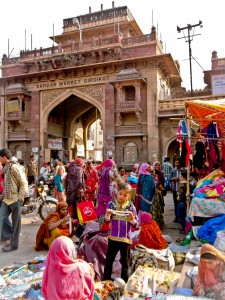Going back
Posted on December 12, 2013 | posted by:A couple of year ago I had the experience of spending a year in India, which I often describe as a love hate relationship. Till today I’m not able to figure out a way to start sharing the story of what represent some of the most amazing and challenging moments of my personal development. I often start with the word chaos, and then I try to explain that my way of understating India is as a place where everything and nothing is possible, and lastly explain that amazement and exacerbation go hand in hand with most of the memories I recall from that year. Going back to it from the lens of a trans designer has enabled me to relate this experience to the challenges and opportunities that are faced in our role as designers and the practice of design itself.
As crazy as this experience was, through not knowing, constantly trying to explain where I came from and making connections to have a better understanding of their culture I was able to understand my own. A big part of my interpretations of what was happening around me relied on observations and information by locals. I have to admit; more often than not my interpretations were not that accurate. Which strongly relates to our roles as designers. As Nussbaum suggest, designers should question if we are collaborating with the right partners and local people in order to be more sensitive, and to better understand our interventions through the eyes of the local.
Living in India thought me that I had to listen and understand, but also have agency and initiative to make decisions and take risks otherwise it could take forever to do anything, and I literally mean forever. As designers we should bring the local context in to play, but also understand that we are the ones have the tools and skills to engage in social-impact initiatives. If we freeze by the uncertainty and fear of not making the right intervention, there’s no room for change. Therefore, when Nussbaum prompts Design Imperialism, the question we should be addressing lies in the balance between the agencies the community and the designer have. Now I describe the value of participatory design as a practice that enables the local people to help build the “why” and “what” so the designer can envision a valuable “how”. As Appadurai suggests in Disjuncture and Difference the imagination – which I relate to design – is a field of social practices, a form of work, a form of negotiating agency and defining fields of possibilities.
Looking back to this experience and my learning’s through the program I’ve also realized that my perception of systems and structures have radically changed in the past few months. While in India, I visited one world’s biggest slums – Dharavi, which I used as an example to understand emergent systems. Looking back to it, slums are the best and worse example to explain emergent behaviors. If we look at it from a theoretical point of view they perfectly fit in to Steven Johnsons attributes of emergent behaviors. However, in reality the have major societal problems which include lack to basic services and infrastructure; which is the picture I have in mind when I think slum. This has made me aware in the struggle in going to either end of a structure. Bottom-Up can generate as much problems as a Top-Down structure. What we have to strive for is practice that provides a middle ground in which designers have enough agencies to act and take ownership of their interventions while being critical in bringing in to the process local communities.
What I saw in the streets of Dharavi wasn’t what I would call a total success, however I understand the value of the silent dialogues that are tied the urban fabric. By connecting slums to emergent behaviors I started relate the concept of emergence to capitalism. Both rely on the notion that humans don’t need higher instruction to achieve high levels of complexity and success.
“The democracy of the market consists in the fact that people themselves make their choices and that no dictator has the power to force them to submit to his value judgments.” Ludwig von Mises
We tend to criticize the openness and lack of intervention of free markets. We reject the notion that each man will achieve success by being selfish and following his own path. On top of that, there’s a tendency to expect things be handed down to us. However, we also tend to push back from being told what to do. Just as markets and governments are faced with this challenge, I’m now intrigued in further understanding the need to leverage open-ended with hierarchical structures in the practice of design.
